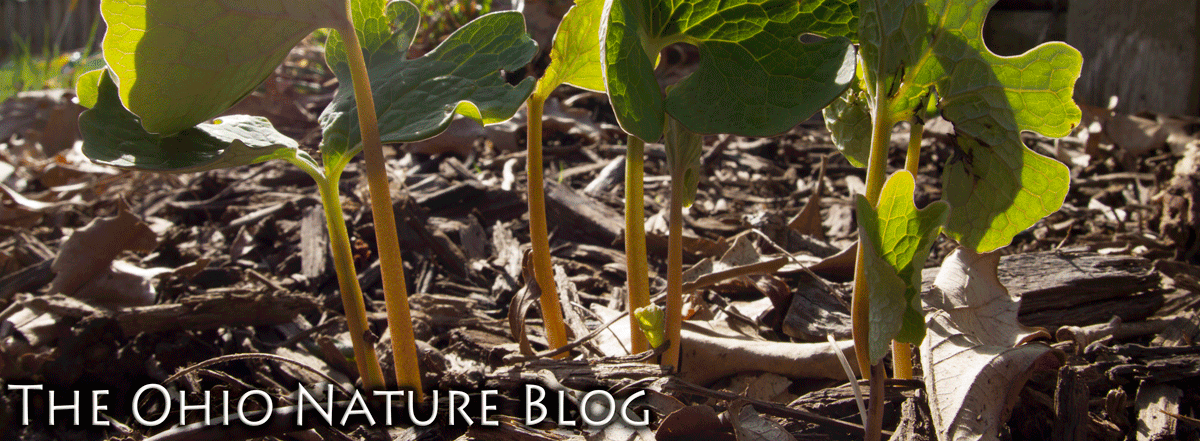Thursday, February 05, 2009
Spread of the Giant Grass
Invasive Phragmites from Barbara Lucas on Vimeo.
Another great video produced by Barbara Lucas, this short film focuses on the non-native invasive Phragmites australis subsp. australis. Sometimes referred to as common or giant reed, many of us in "the biz" just call it Phragmites, pronounced frag-MY-tees. This plant is a wetland species, but will also grow on beaches and even wet, seeping hillsides- it doesn't need very much water. This is one plant that I've seen expand in my relatively short lifetime.
Also- There is a native phragmites that has been recently described and named Phragmites australis subsp. americanus. It too is mentioned in the video. Currently, this native grass is a state threatened species. I wrote and article detailing it in the 2007 Winter issue of Natural Ohio.
Tom
Subscribe to:
Post Comments (Atom)

No comments on the phrag article? My (never completed) PhD work was on modeling risk factors for Phrag invasions in southern Maryland. Knowledge about the topic among the general public in MD/VA has gone from about zero (10 years ago) to "OH Yeah, you mean that big grass on the shoreline when you cross into (insert name of urbanized port city)! That stuff!"
ReplyDeleteI wonder how this got here to the US? I don't travel any more but when I did, either customs or someone stopped us dead in our tracks either on the border or at the airports and took away any plant material we might have had with us -- and also animals. Is the grass legal and is it being sold in nurseries? I don't know of it but then I might be looking at it and not know what I am even looking at.
ReplyDeleteI am trying to get three bunches of dwarf clumping bamboo started but it doesn't look any larger now than it did when Spring Hill sent it to me this spring.
Our Flower Pot
Abe- This species has been in the U.S. likely for hundreds of years, first on the east coast, many believed that the PA turnpike helped it migrate inland, and once it got to the eastern Great Lakes, it really has taken off.
ReplyDeleteI have seen variegated varieties of this plant for sale. In all my travels across Ohio, i've never seen it planted in anyone's yard.
Tom